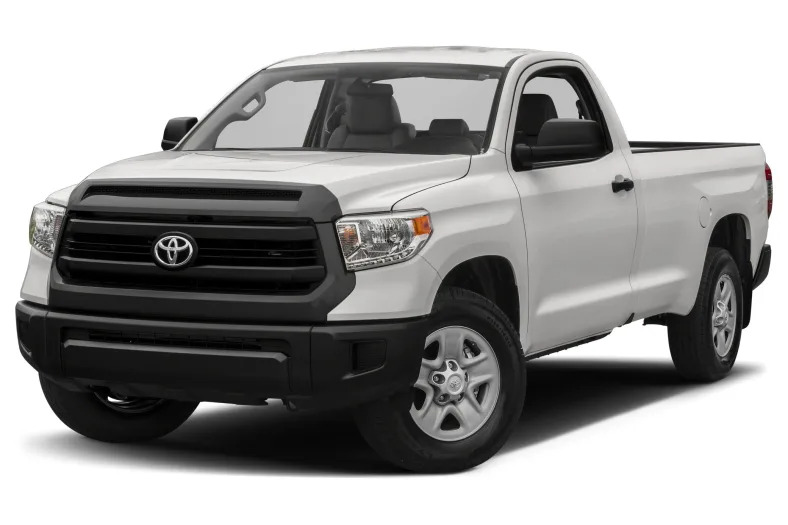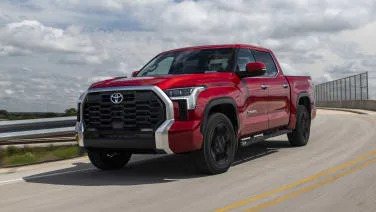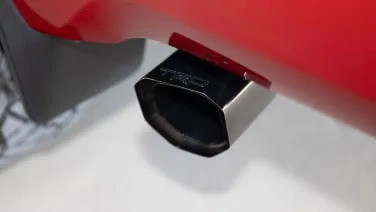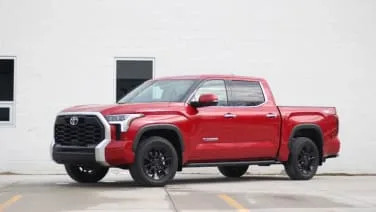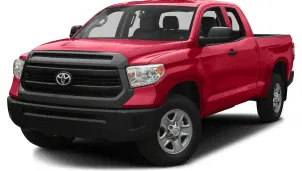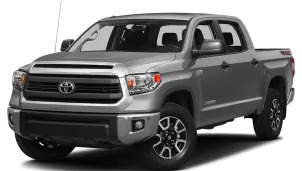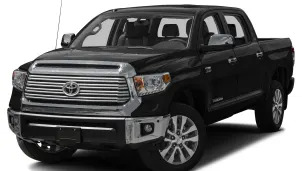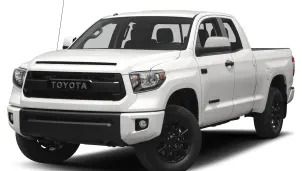SR 5.7L V8 4x4 Regular Cab Long Bed 8 ft. box 145.7 in. WB
2016 Toyota Tundra
The Toyota Tundra is a full-size, half-ton pickup that raises the competitive bar in its class. It's built to Toyota's high standards of quality, durability and reliability. Toyota's Tundra is available in many variations to meet different truck users' needs for 2015, with two- or four-wheel drive, three cab styles (regular, Double Cab and CrewMax), three bed lengths (short, standard and long), three wheelbases and two different V8 engines. The base engine is a 4.6L V8 making 310 horsepower and 327 ft-lb of torque. A 5.7L "iForce" V8 making 381 horsepower and 401 lb-ft of torque is available on all models. Both the 4.6L and 5.7L drive 6-speed automatics. All Tundras have a rear suspension design that maintains a level ride height even with a full load; fully boxed frame rails and rolled C-channel members underpin the truck. When properly equipped, the Tundra is rated to tow nearly 11,000 pounds. Each of the three beds is about 22 inches deep and shaped to accept 2x8-foot lumber dividers. The steel tailgate is designed to be opened and closed with just two fingers, and there's also an available Deck Rail system for more individualized cargo arrangements. Regular cab models offer the standard two-door arrangement with one row of seating. The Double Cab offers smaller rear doors for occasional back-seat passengers, and the big CrewMax brings full-size rear doors and seating comparable to that offered in big SUVs. CrewMax models also have a unique reclining and sliding rear seat, while Double Cabs get a folding seat bottom that allows for a flat storage area when the seat isn't in use. The Tundra has more standard safety features than most of its competitors. Front-seat side airbags are standard on all models, along with roll-sensing side-curtain airbags and a front seat knee airbags. Four-wheel disc brakes with vehicle stability control are standard on all Tundras. The Tundra also features standard trailer sway control programming and brake override technology. It utilizes the truck's stability control system to detect unintended side-to-side movement at the rear wheels. Should the system detect movement, the truck's anti-lock brake system is used to counteract yaw and prevent jackknifing. A trailer brake controller allows the driver to control the amount of brake boost applied to the trailer's electric brakes when the driver applies the vehicle's brakes. While the safety features are standard across the line, the Tundra ranges from basic to very luxurious inside depending on the trim level, starting at the very frugal base model and going all the way up to the very well-appointed Limited. Toyota has updated the stereos in all Tundra models for 2016. They now run on Toyota?s Entune 2.5 architecture.
Full Review
The Toyota Tundra is a full-size, half-ton pickup that raises the competitive bar in its class. It's built to Toyota's high standards of quality, durability and reliability. Toyota's Tundra is available in many variations to meet different truck users' needs for 2015, with two- or four-wheel drive, three cab styles (regular, Double Cab and CrewMax), three bed lengths (short, standard and long), three wheelbases and two different V8 engines. The base engine is a 4.6L V8 making 310 horsepower and 327 ft-lb of torque. A 5.7L "iForce" V8 making 381 horsepower and 401 lb-ft of torque is available on all models. Both the 4.6L and 5.7L drive 6-speed automatics. All Tundras have a rear suspension design that maintains a level ride height even with a full load; fully boxed frame rails and rolled C-channel members underpin the truck. When properly equipped, the Tundra is rated to tow nearly 11,000 pounds. Each of the three beds is about 22 inches deep and shaped to accept 2x8-foot lumber dividers. The steel tailgate is designed to be opened and closed with just two fingers, and there's also an available Deck Rail system for more individualized cargo arrangements. Regular cab models offer the standard two-door arrangement with one row of seating. The Double Cab offers smaller rear doors for occasional back-seat passengers, and the big CrewMax brings full-size rear doors and seating comparable to that offered in big SUVs. CrewMax models also have a unique reclining and sliding rear seat, while Double Cabs get a folding seat bottom that allows for a flat storage area when the seat isn't in use. The Tundra has more standard safety features than most of its competitors. Front-seat side airbags are standard on all models, along with roll-sensing side-curtain airbags and a front seat knee airbags. Four-wheel disc brakes with vehicle stability control are standard on all Tundras. The Tundra also features standard trailer sway control programming and brake override technology. It utilizes the truck's stability control system to detect unintended side-to-side movement at the rear wheels. Should the system detect movement, the truck's anti-lock brake system is used to counteract yaw and prevent jackknifing. A trailer brake controller allows the driver to control the amount of brake boost applied to the trailer's electric brakes when the driver applies the vehicle's brakes. While the safety features are standard across the line, the Tundra ranges from basic to very luxurious inside depending on the trim level, starting at the very frugal base model and going all the way up to the very well-appointed Limited. Toyota has updated the stereos in all Tundra models for 2016. They now run on Toyota?s Entune 2.5 architecture.
Hide Full Review
Hide Full Review
Retail Price
$33,000
MSRP / Window Sticker Price
| Engine | 5.7L V-8 |
| MPG | 13 City / 17 Hwy |
| Seating | 3 Passengers |
| Transmission | 6-spd auto w/OD |
| Power | 381 @ 5600 rpm |
| Drivetrain | four-wheel |
Smart Buy Program is powered by 

